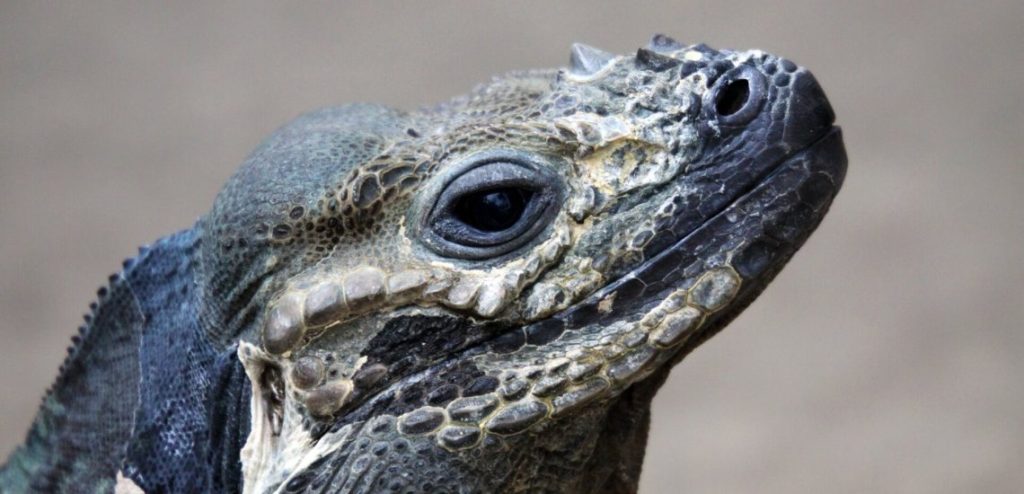SANTO DOMINGO — OK, we gotta admit it – it’s not really a rhinoceros.
But the fascinating Rhinoceros Iguana Cyclura cornuta isn’t so-called for nothing.
The horn on its head really does resemble that of a rhino — but on such a large reptile, it might be more apt to compare it to a dinosaur like the Triceratops. And it’s not just a pretty face. As it potters around munching leaves, flowers and berries, it disperses seeds throughout its range, acting as a key driver of vegetation growth throughout its habitat.
That’s why building company CEMEX has been working in collaboration with Grupo Jaragua (BirdLife in the Dominican Republic) since 2013, to establish a Biodiversity Action Plan at their Las Salinas site in the Barahona district of Dominican Republic. This month, the project has received prestigious recognition from the Wildlife Habitats Council (WHC)and now holds a WHC Gold Conservation Certification.
This is a huge accolade, and a testament to the project’s impressive achievements. WHC recognizes programs for their exemplary efforts in habitat restoration, conservation education and land stewardship. The CEMEX-BirdLife project was especially commended for its community-based and locally appropriate approach.
“We are proud to receive Gold Conservation Certification from the WHC. This recognition reflects our successful sustainability efforts in the country, and fosters our commitment to embed sustainability in every aspect of our operations,” said Alejandro Ramirez, President of CEMEX Dominican Republic.
“We are thrilled that our team effort has been awarded the highest recognition by the WHC.”
Yolanda León, president of Grupo Jaragua, found the scheme equally rewarding: “Our collaborative project will not only guide CEMEX quarry restoration efforts in the future, but has provided a lifeline for two critical species threatened with local extinction. We are thrilled that our team effort has been awarded the highest recognition by the WHC”.
The site out of which the project was born is a large gypsum quarry next to the small rural village of Las Salinas. It hosts dry forest habitat, favoured by the Rhinocerous Iguana, which is Vulnerable to extinction, and only found on the island of Hispaniola. CEMEX and Grupo Jaragua recognised the importance of conserving this globally threatened species and its functional role in the ecosystem, and their project aimed to tackle the two main threats that are driving the iguana to extinction: habitat loss and hunting. The award-winning project involves a series of initiatives to not only monitor and restore the habitat of the iguana, but also to raise awareness of the importance of biodiversity to the neighbouring communities.
Tree nurseries were set up to restore local forests
In order to tackle local habitat loss, mainly due to illegal charcoal production, the project has brought together locals, CEMEX employees and environmentalists to work in a combined effort to run several native tree nurseries to facilitate reforestation. By November 2016 the nursery had over 6,200 plants of 13 species ready for reforesting, especially along the Lemba River, which runs through the quarry.
Grupo Jaragua advised on the types of species to be grown, such as the bird-attracting native tree Bursera simaruba and the endangered native trees Swietenia mahagoni and Catalpa longissimi, which made up over 50 percent of the planted trees. WHC recognised CEMEX’s efforts in collaborating with professional technical biodiversity experts to ensure that the program is well suited to the local environment and community, and praised the impressive numbers of employees and locals involved. The conservation certification report on the project highlights that its strong collaborative approach has been integral to its success.
Iguana hunters switched to “iguana guiding” for ecotourists
The issue of iguana hunting by local “iguaneros” was first approached by extensive interviews with the hunters, most revealing that they engaged in it as a hobby or due to family tradition. Workshops were run to begin to tackle this practice, involving educating the participants about the ecological value of the iguana, and discussing more sustainable and iguana-friendly sources of income. As a successful consequence, five of the “iguaneros” have since started an “iguana guiding group” which aims to build iguanas into local ecotourism activities for tourists and scientists.
It’s not just the iguana that has benefited from this ambitious project, but also the Hispaniola Slider turtle (classed as Vulnerable), and a host of other wildlife that lives in Laguna Cabral, a large lagoon close to the quarry site. The lagoon is already designated as an Important Bird & Biodiversity Area (IBA), and monitoring of this key site has been included in CEMEX-BirdLife’s project. Water levels at the lagoon have shown a worrying decrease recently, mainly due to poor water management practices, exacerbated by climate change. It is hoped that through monitoring, advocacy and informed management recommendations, the project will be able to generate momentum to build a more sustainable future for this IBA.
Grupo Jaragua celebrated events such as World Wetlands Day at local schools
The rich diversity of birds at the site has also been brought to the forefront by the project. Ornithologists from Grupo Jaragua identified over 95 species the study area, and training sessions on bird identification and conservation were run to foster an appreciation for this diverse local bird life and explore eco-tourism opportunities. WHC recognized the project’s commitment to conservation education, which also involved Grupo Jaragua representatives heading out to local schools to celebrate events such as International Migratory Bird Day and World Wetlands Day, sharing a range of educational materials with at least 250 students.
Certification from the WHC shows that the collaboration at Las Salinas is successfully working to the benefit of the local wildlife and community.
It also demonstrates BirdLife International should be the partner of choice for global business wishing to operate in harmony with nature and get recognized for such efforts.
With the project’s focus on education and promotion of nature conservation, the good work will hopefully be carried forward by all sides, helping to create a more sustainable future for the villages nestled in the south of the Dominican Republic.







